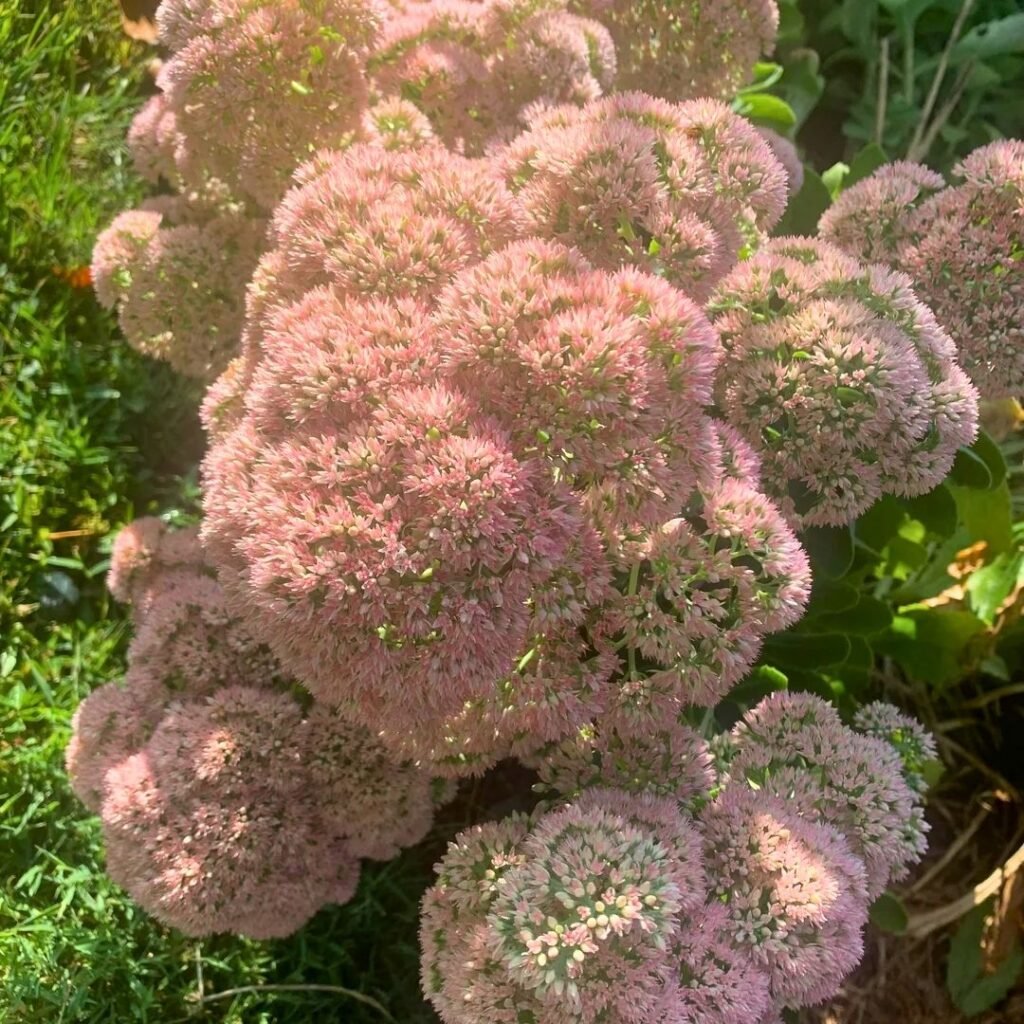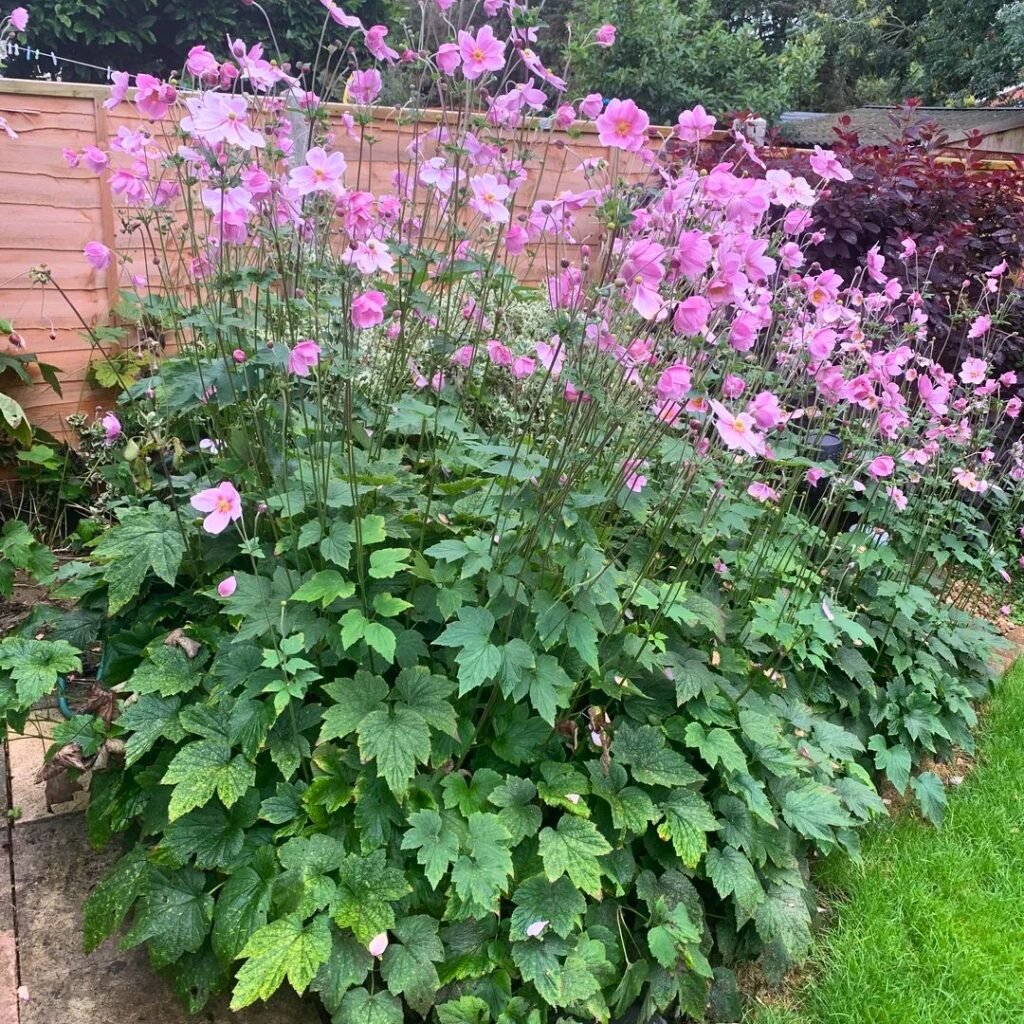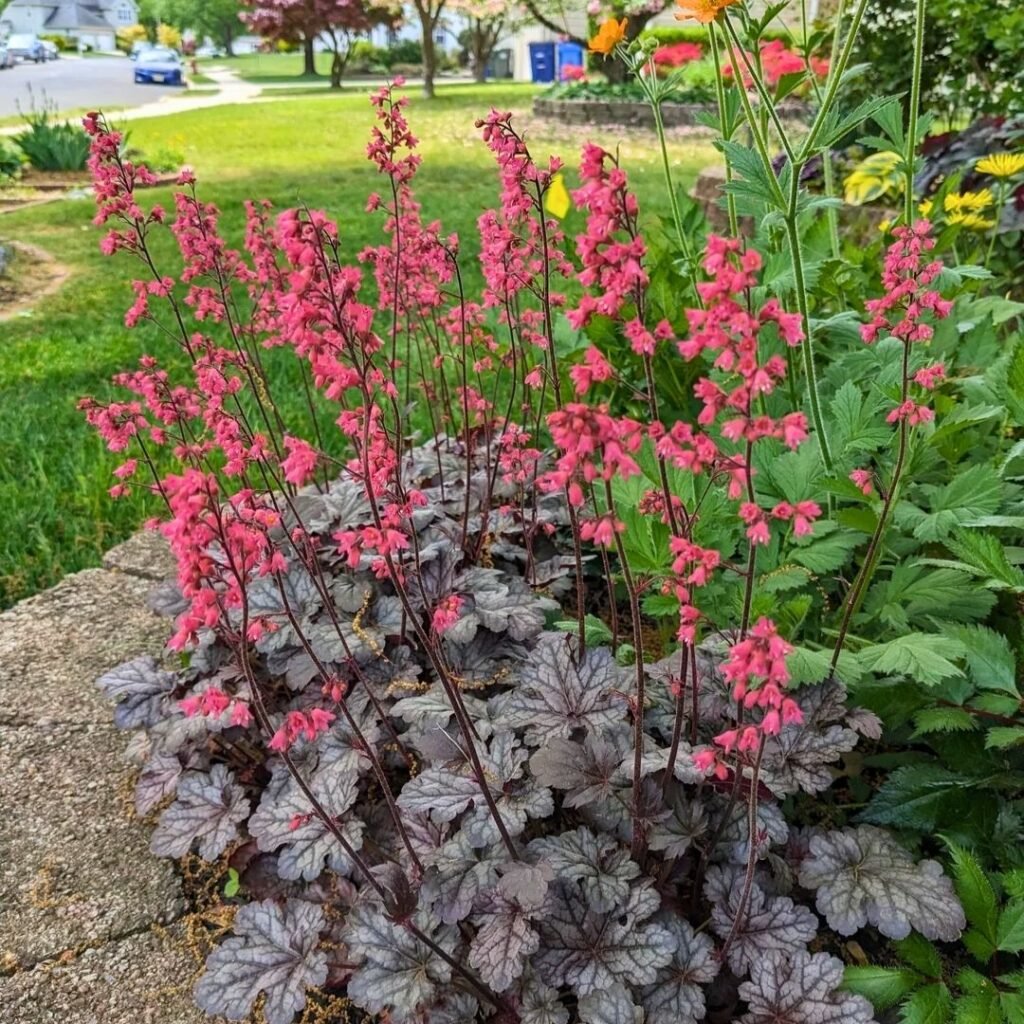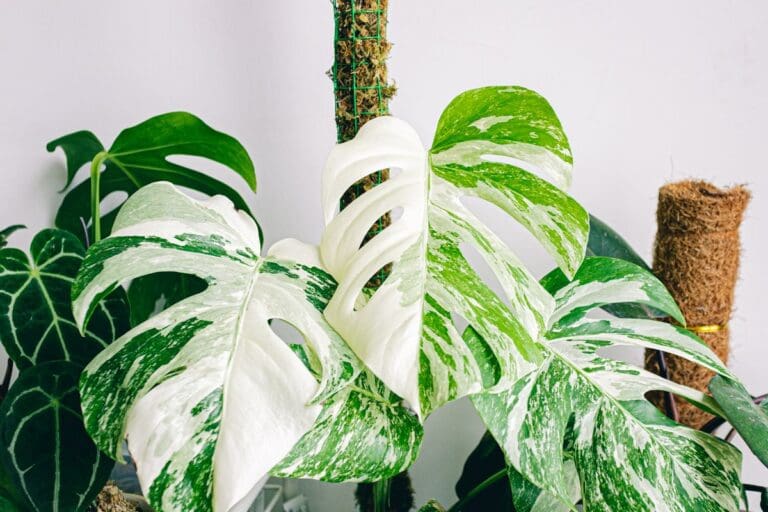3 Plants That Actually Love the Fall Transition
When the weather starts to cool down, I’m always on the lookout for ways to keep my garden lively.
People often assume most plants fade away in the fall, but honestly, that’s not the case for every plant.
Some plants really shine when temperatures drop and days get shorter.
I get a kick out of finding these tough varieties because they add color and a bit of surprise to my yard this time of year.
Please note: Simplify Plants is reader-supported. As an Amazon Associate, I earn from qualifying purchases made by our readers with no extra cost added to you all! Some links in the post are affiliate links and I get a commission from purchases made through links in the post.
1) Sedum Autumn Joy

I’m a big fan of Sedum Autumn Joy because it’s just so easy. This plant doesn’t care about chilly weather and honestly looks its best in the fall.
The thick, fleshy leaves store water, so I rarely worry about it during dry spells. Sedum Autumn Joy can go a bit without rain and still look happy.
In early fall, the flower heads start out pink and slowly shift to a deep, rosy red. The color just pops more as the air gets cooler.
One thing I really appreciate is how Sedum Autumn Joy brings in bees and butterflies. Even as summer winds down, there’s still movement in the garden.
Deer tend to leave it alone, which is a relief. I don’t have to fuss about it getting munched.
I like using Sedum Autumn Joy for borders, along walkways, or just popping it in a pot. The stems are sturdy, so they don’t flop over much, even after a storm.
It’s honestly about as low-maintenance as it gets. I stick it in a sunny spot with decent soil and it just comes back every year.
The blooms last for weeks, in my experience. They look good even as the weather gets chilly, adding color when everything else is fading.
Sometimes I leave the dried flowers up through winter. They add a little texture when nothing else is happening outside.
If you want a plant that thrives in fall and barely needs any fuss, Sedum Autumn Joy is a winner.
2) Japanese Anemone

Japanese Anemone is one of those plants that surprises me every year. Just when most flowers are calling it quits, these delicate blooms show up.
They open in late summer and stick around well into fall. The soft pinks and whites look especially nice next to autumn leaves.
This plant likes cooler weather and isn’t too picky about sun. I’ve had luck with Japanese Anemone in part shade, and even in full sun as long as the soil doesn’t dry out.
It’s nice not having to worry about special care for once.
Japanese Anemone grows in tidy clumps and returns every year. The tall, slender stems make the flowers look like they’re floating above the leaves.
I think they’re perfect along a fence or tucked at the back of a flower bed.
Once you plant a few, they slowly spread. I’ll trim the leaves back in early spring just to tidy things up.
The roots are tough and handle most fall weather without any drama.
Another perk: deer usually ignore Japanese Anemone. It’s a relief not to have to guard them all season. Butterflies sometimes pop by for a visit too.
If you’re after a plant that really stands out during the fall, I always recommend Japanese Anemone. It keeps my garden colorful and bright when everything else is winding down.
3) Heuchera Pumpkin Spice(Coral Bells)

When I want a burst of color for fall, I reach for Heuchera Pumpkin Spice—also called coral bells. The leaves come in warm shades of orange, gold, and sometimes a bit of red.
I usually plant it where it gets some shade. Heuchera doesn’t mind cooler weather, and the colors seem to get even richer as it gets cold.
It doesn’t ask for much, care-wise. Once it’s settled, I barely have to water unless there’s a dry spell.
Heuchera works in beds, borders, or even containers on the porch. It looks good solo or mixed with other fall plants.
Pollinators like bees seem to enjoy it too. In spring, it’ll send up tall stems with tiny flowers, but honestly, the leaves are the main event.
I don’t do much except trim off any scraggly leaves now and then. It’s pretty self-sufficient.
Heuchera Pumpkin Spice adds a splash of color just when other plants are starting to look tired. I love seeing those warm leaves outside my window every autumn.
Why Fall Is the Perfect Time for Certain Plants

I’ve noticed some plants just thrive in autumn. The air is cooler, which means less stress, and the soil holds moisture longer—roots love that.
Unique Climate Benefits of Autumn
In fall, daytime temps drop but there’s still decent sunlight. Plants get the light they need without baking in the heat.
Cooler nights slow down water loss, so I don’t have to drag out the hose as often.
I’ve also seen that pests and diseases are less of a headache in the fall. Fewer bugs means plants can focus on growing, not defending themselves.
Shorter days push plants to focus on root growth. That’s great for getting roots established before winter hits.
Soil Changes During the Fall Transition
As things cool off, soil moisture usually goes up. More rain and less evaporation keep roots happy.
Autumn is when soil microbes are busy too. They break down old leaves and plant bits into fresh nutrients, so plants get a natural boost.
By fall, the soil isn’t rock-hard like in summer. It’s softer, making it easier for roots to spread out. I find this makes fall a great time for planting or moving certain plants around.
Best Practices for Supporting Fall-Loving Plants
I try to give my fall plants what they need to roll with the changing season. Keeping up with their water, food, and protecting them from frost really helps.
Watering and Feeding Tips

Even though fall is cooler and wetter, I don’t stop checking the soil. If it’s dry about an inch down, I water deeply.
It’s better to water less often but more thoroughly. That way, roots grow deep and strong.
I usually use a balanced, slow-release fertilizer in early fall. It helps plants store energy for winter and new growth in spring.
I don’t go overboard with fertilizer—too much can actually make things worse.
Key Tips:
- Water at the base of the plant, preferably in the morning.
- Mulch with leaves or straw to keep moisture in and roots warm.
- Pick fertilizers labeled for fall or “winterizer” blends.
Protecting Plants from Early Frost
Frost can sneak up fast, so I keep an eye on the forecast. When cold nights are coming, I cover smaller plants with lightweight cloths or old sheets.
I make sure the covers reach the ground for extra warmth. For bigger plants, I use burlap or frost blankets.
If I have plants in pots, I’ll move them close to the house or even bring them inside if frost is coming.
I avoid plastic covers since they can trap moisture and freeze the leaves.
Frost Protection Steps:
- Water before a frost—wet soil holds heat better.
- Cover plants before sundown and take covers off in the morning.
- Add mulch around the base for more insulation.
Frequently Asked Questions
Fall brings out some of the best colors and hardiest plants, in my opinion. A lot of favorites keep their leaves or flowers even after an early frost.
What are the best flowers to plant for a colorful autumn display?
My top picks are Sedum Autumn Joy and Japanese Anemone. Sedum’s rosy-pink clusters deepen to red as it gets cooler.
Japanese Anemones bloom with soft pink or white petals that stand tall over their leaves. They look great together.
Which perennials offer the most striking fall colors?
I’m partial to Heuchera ‘Pumpkin Spice’ for its orange and rust-toned leaves.
Sedum Autumn Joy is another perennial with bold color, and its flowers attract butterflies in early fall.
Can you suggest some plants that bloom beautifully in September and October?
Japanese Anemone blooms right through these months. The flowers bounce in the breeze and really catch your eye.
Sedum Autumn Joy also puts on its best show in September and October, with blooms that last and last.
What are some winter-flowering plants suitable for colder weather?
I like to plant Hellebores (Lenten rose), which start flowering as early as January. Witch Hazel is another favorite with yellow or orange blooms in late winter.
These hardy plants handle the cold and keep the garden interesting.
What types of shrubs flourish during the fall and into winter?
Winterberry holly is a favorite for its bright red berries that stick around after the leaves drop.
Camellias also bloom in some areas, showing off flowers from fall into early winter, especially if you’re in a milder spot.
Are there any late autumn flowers that can add vibrancy to my garden?
I always turn to Asters and Chrysanthemums for a splash of color as the days get shorter. They’re surprisingly tough, and their purple, pink, gold, and white blooms hang on even when most flowers have called it quits.
Sedum Autumn Joy is another favorite of mine. Its chunky blooms stick around deep into fall, brightening things up just when you think the show’s over.
Recommended Garden Supplies
| Product Image | Our Recommended Gardening Supplies | Check Offers! |
|---|---|---|
Top Top
Top
Top
Top
Top
Top
Top
Top | rePotme Houseplant and Tropical Classic Potting Soil Mix | Check Offer On Amazon |
 Top
Top
Top
Top
Top
Top
Top
Top | Espoma Organic Indoor Plant Food | Check Offer On Amazon |
 Top
Top
Top
Top
Top
Top
Top
Top | GooingTop LED Grow Light 6000K Full Spectrum Clip Plant Growing Lamp | Check Offer On Amazon |
 Top
Top
Top
Top
Top
Top
Top
Top | Soil Moisture Meter | Check Offer On Amazon |
 Top
Top
Top
Top
Top
Top
Top
Top | Govee Hygrometer Thermometer, Bluetooth Enabled! | Check Offer On Amazon |
 Top
Top | LEVOIT Humidifiers for Large Room(Best For Plants) | Check Offer On Amazon |
 Top
Top
Top
Top
Top
Top
Top
Top | Upgraded DIY Automatic Drip Irrigation Kit, 15 Potted Houseplants Support | Check Offer On Amazon |
 Top
Top
Top
Top
Top
Top
Top
Top | Stainless Steel Heavy Duty Gardening Tool Set | Check Offer On Amazon |
 Top
Top
Top
Top
Top
Top
Top
Top | Bonide Insecticidal Soap | Check Offer On Amazon |
 Top
Top
Top
Top
Top
Top
Top
Top | Bonide 32 oz Spray Neem Oil for Organic Gardening | Check Offer On Amazon |
 Top
Top
Top
Top
Top
Top
Top
Top | Garden Safe Fungicide | Check Offer On Amazon |





